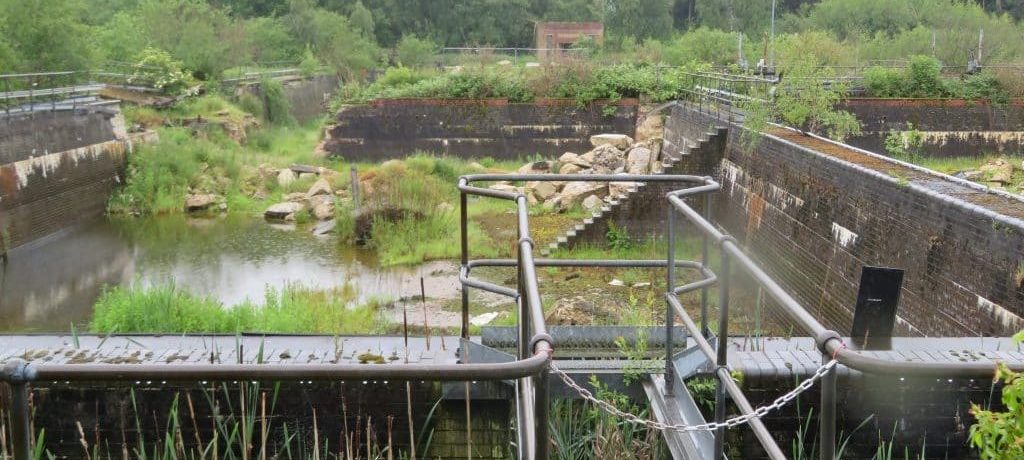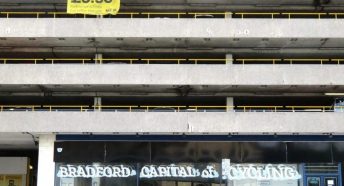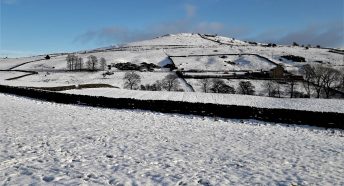Green Belt – A Very Special Outcome?
The Esholt site is within the Leeds-Bradford Green Belt. The key features of Green Belt are openness and permanence – that’s to say, it has to remain as open countryside in perpetuity if it is to fulfil its purposes.
The site nestles within a network of woodlands flanking the River Aire and the Leeds-Liverpool Canal, creating a broad stretch of openness between Shipley, to the south-west, and Yeadon and Guiseley to the north and north-east. The river sits low between the promontory known as The Nosegay – perhaps so-called because it is mercifully upwind of the sewage works, and Sodhall Hill – perhaps so-called because there isn’t much up there…
Had the Green Belt designation pre-dated the water treatment works or the quarry, then it would not have precluded those developments, because the planning system doesn’t regard these uses as inappropriate in the Green Belt. Housing and employment developments are presumed to be inappropriate, which means that a planning applicant normally has to demonstrate ‘very special circumstances’ for those uses to be permitted in Green Belt.
This situation is complicated by the fact that re-use of large, derelict brownfield sites can exempt an applicant from the need to demonstrate very special circumstances, so long as the resulting development would not increase the impact on the openness of the Green Belt. You might think that a sewage works and a quarry would be at least as damaging to the openness of the Green Belt as some homes and business units, but it’s not as simple as that. The existing uses generate very low volumes of traffic, are quiet and dark at night, and are well-screened by mature woodland. Bringing in all the urbanising impacts of 150 homes and 100,000 square metres of business space could potentially have a dramatic effect on tranquillity, which CPRE regards as a form of openness. That’s to say, openness is not only visual, and tranquillity is not only about sound – the two qualities are inter-related.
The applicant has not sought to deny that the scheme would have an impact. Instead they have cited Local Plan policies, as well as an appeal decision, to argue that the opportunities to provide affordable homes (30 of the 150 are proposed to be for social/affordable rents) and a rail-accessible, brownfield location for major employment both offer justifications for developing in the Green Belt.
CPRE is not immovably opposed to Green Belt change. The principal question we ask every time a change is proposed is, “What will this change enable? What will be the result?” If, as Yorkshire Water claim, the Esholt development will be ‘truly sustainable’ then it should be worthy of our support. But what does that actually mean?
For a start, recycling a brownfield site is – in principle – a good thing in itself. Land is a valuable resource and should be used as efficiently as possible. This site has worked very hard for many years, and it is also well-known by local communities, so it’s important that its future is interesting too. In fact, we could suggest that a development must be interesting, in some way, for it to be sustainable. ‘Interesting’ also means that there should be good reasons for people to go to the site other than just to go to work or to go home – a useful shop, some community facilities (eg somewhere for local societies to meet), a good walk, an opportunity to connect with nature.
Recycling a brownfield site in a sustainable, interesting way doesn’t necessarily mean filling it as full as possible with built development, and the Esholt site almost certainly doesn’t lend itself to that solution. On the other hand, generating enough activity to give the place an interesting future might require attracting more people to use the site, and that in turn might point to the need for the built-up areas of the site to be developed a bit more densely. There’s no way that 150 new homes would justify introducing or diverting a bus service, and the risks of introducing substantially more car traffic can’t be glossed over. On the other hand, it may be necessary to keep the development small to avoid the risk to the character of the adjacent, historic village of Esholt. And if the 150 homes were to become an exemplar for how larger housing schemes might be built to higher, more imaginative standards in the future, then that would certainly work in their favour.
On balance, the potential for a very special outcome at Esholt certainly exists, and the case for allowing the re-use of this brownfield site in the Green Belt seems to stack up well. We still need to be cautious, though: with so much bath water here, we must be vigilant for the baby.









